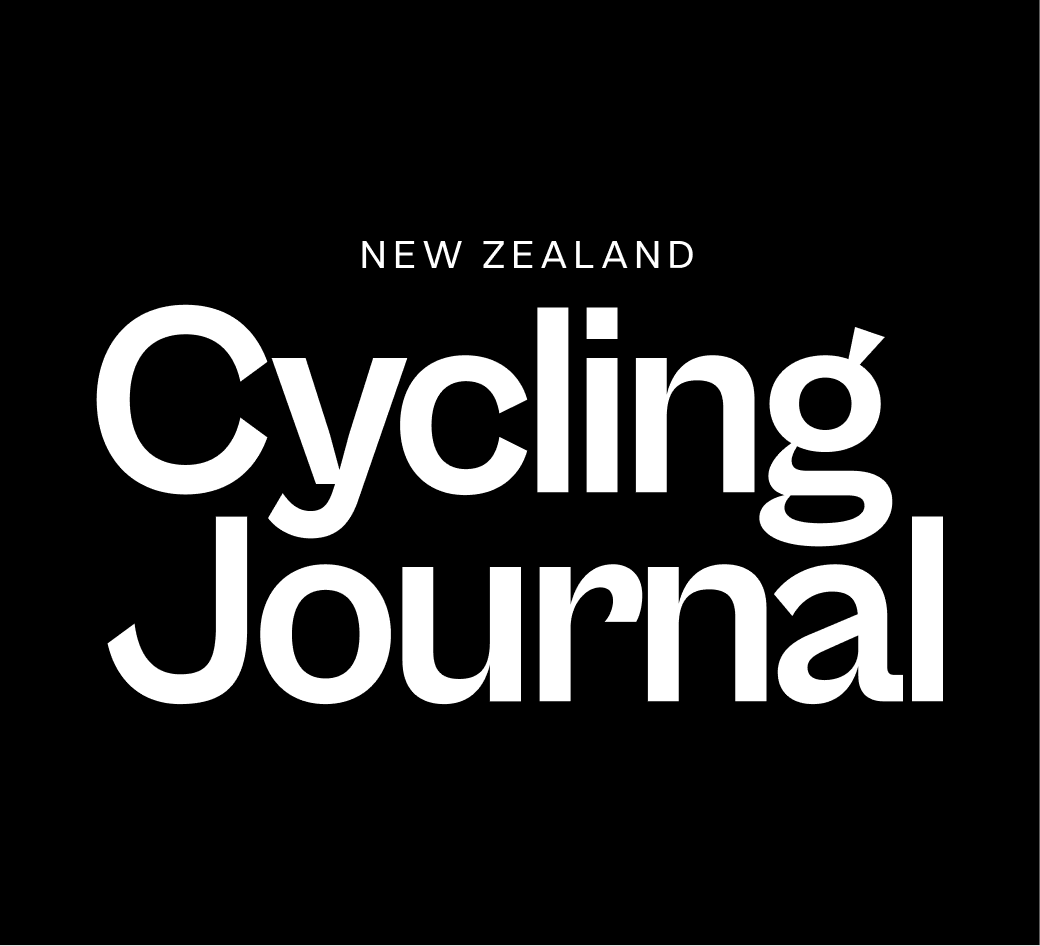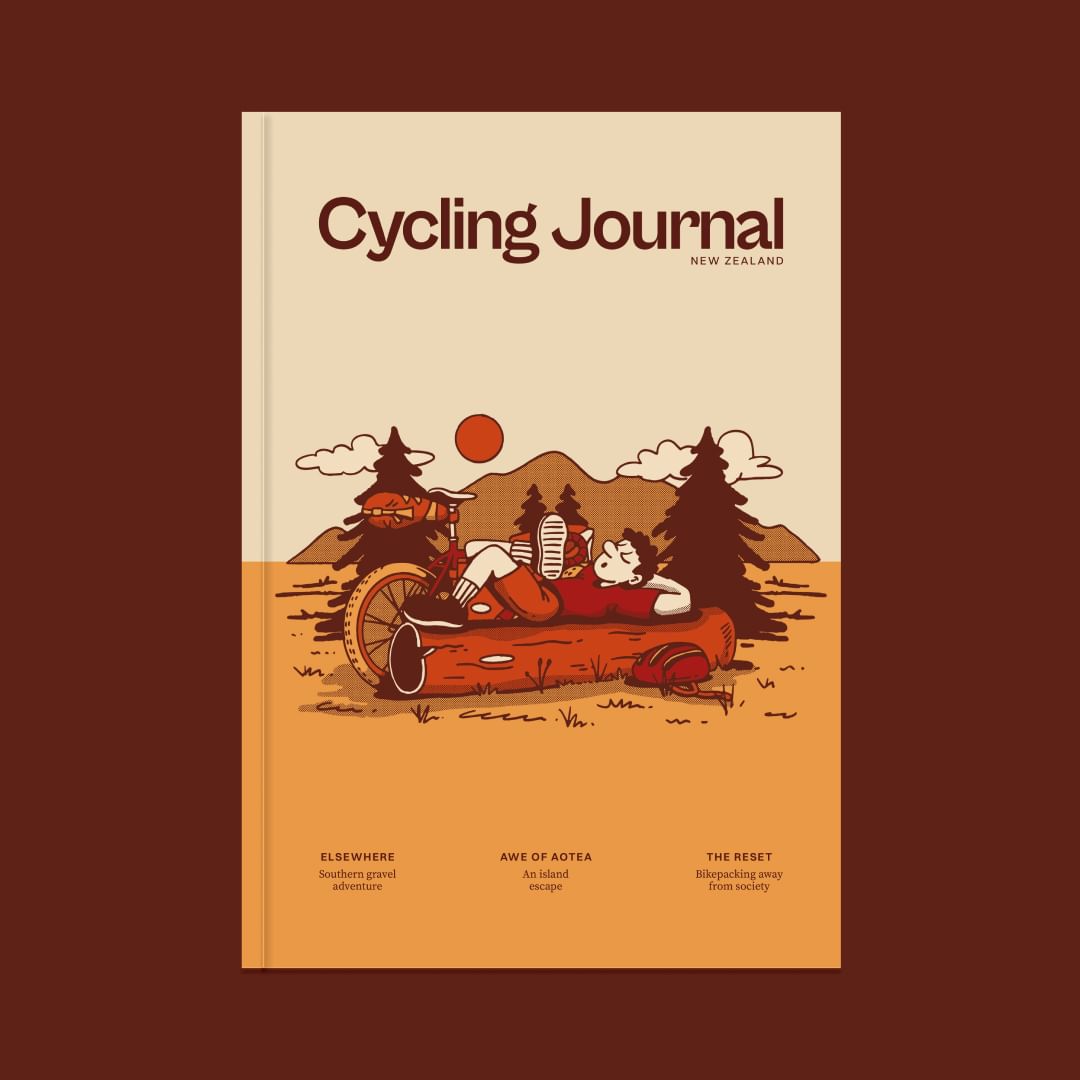Words & Images Sam Baker
Every so often, I get the itch. An itch that needs scratching, that nags until it is relieved. For me, that itch is to get away from society – its comforts, its routine and its relentless pace. Sometimes, I just want to be alone, embrace the present moment and do something out of my comfort zone. It is in these moments you really get to see; your mind is clear, and the world takes on a new hue. So, when I saw Matt Quirk had developed a new brevet route starting and finishing in my hometown of Wanaka, I jumped at the chance to ride it. It was called The Reset, and that was exactly what I needed.
550 Kilometres 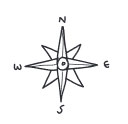 Central Otago
Central Otago
The Reset is a bikepacking dirt brevet, starting and finishing on the shores of Lake Wanaka, New Zealand. It explores some classic Central Otago adventure terrain - big hills, exposed ridgelines, minimal tarmac and the chance to come face to face with nature in all its beauty and malice. The route is a 550km (with a 350km shorter option) snapshot of Central Otago’s finest countryside, with a healthy 9,300m of elevation gain. Sign me up.
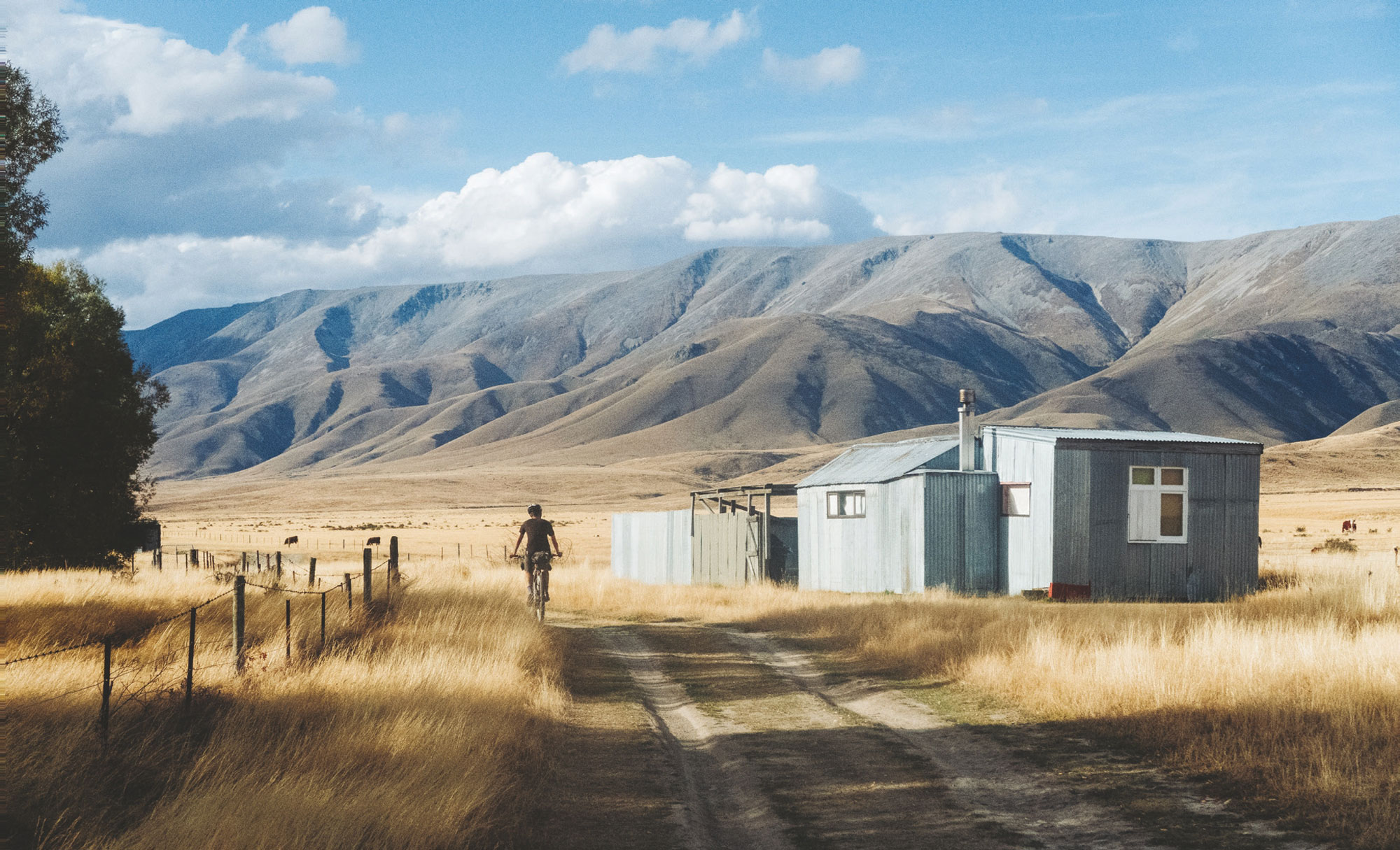
With a 7am Saturday morning start time, and a long weekend on our hands courtesy of Otago Anniversary day, my good friend Olly Manson and I loosely decided this was our proposed timeframe. After all, we had work to be back for. We were staring down the barrel of 550 kilometres, 9,300m of elevation gain, and three glorious days in which to complete it. It’d been a minute since I’d seen the morning darkness, and the excitement was tangible as I rolled out my front door and away from the warm comforts of home. You are on your own now, cowboy. With coffee, chocolate-filled sourdough buns and an air of excitement amongst the fellow starters, we were all eager to get the pedals moving and start our own adventure.
The day was crisp, no wind, and a clear sky above us. All the makings of a good day. The watch struck seven, and with that we were underway – our destination as far as we dared. Bikes heavy, legs fresh and on familiar trails, the first 55 kilometres flew by. In our sights was the Cluden Hill, and this was somewhere new for both of us. We had heard rumours of hike-a-bike sections, but we were none the wiser as to where or how far these sections would be, so on we marched. The Cluden Creek trail was relentless. Chunky gravel that sidled steeply up and down the valley for 20kms, wih plenty of the hills being too steep to ride. It was early on, and we were getting what we came for. Surely this was the hike-a-bike they were talking about.
After checking the topo maps, we knew we had a big climb just ahead of us – and the high point of the route at 1644m. After a few k’s riding on a soft grass-covered track, we were warmly greeted with the climb. Looming in front of us snaked a steep 4×4 track littered with riders pushing their bikes, as we craned our necks to the distant ridge. “Ahh this is definitely the hike-a-bike….”
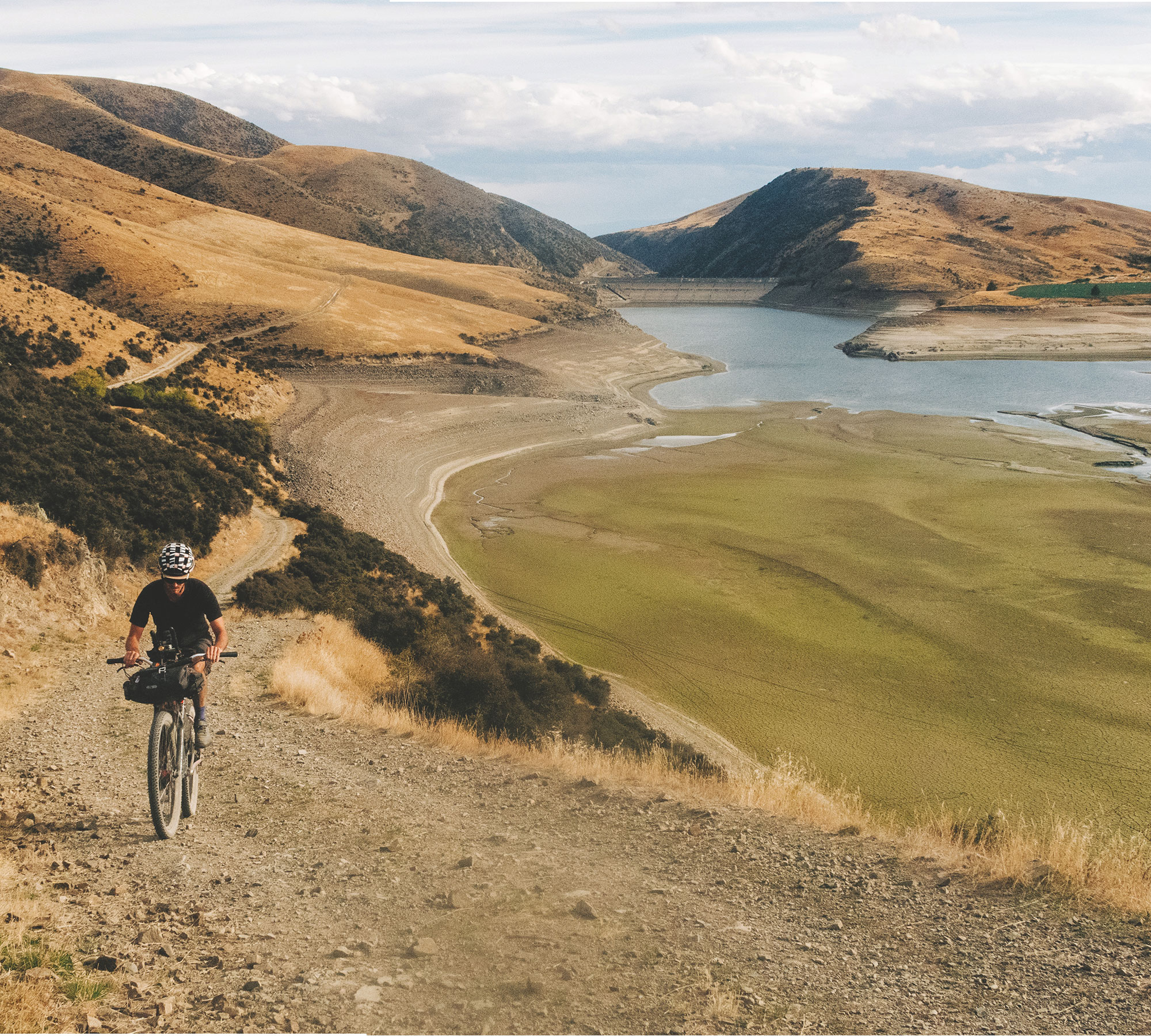
Observations by bike are my favourite kind. Life is slower, and you are immersed in your surroundings entirely. This is the reset I was after.
An hour later we crested the ridge, relatively shagged. Lunch time. We gazed around while eating some salami rolls – there was Mt Aspiring to the west and the Ida Valley to our east. Nature was ever patient; there’s no sign of that fast-paced routine up here. Just us, a sandwich and the sun. As the heat beat down on us, we traversed the tops, gradually ascending through a myriad of rock pillars and tussock to the eventual summit. The hard work was behind us, and a promising refuel stop in St Bathans lay before us. Time to crack on. An 1100m descent on a fully-laden bikepacking rig really gets the brakes singing, and I was thankful for the 2.4 Aspens and forks I had decided to run. Take note. After nine hours on the go, we rolled into the famous Vulcan Hotel in St Bathans. The boys were in dire need of a Coke and a decent feed. Turns out the kitchen closes from 3-5pm and we arrived promptly at 3:30. Classic. A jug of Coke and a sausage roll later we were back on the road.
As we sat there, we discussed the end goal for the day. Omarama would be ideal, but it seemed a big push as we sat nursing our jug of Coke each. We had ridden the West Manuherikia valley during the Sound to Sound, so we had a good understanding of what we were in for. Omarama saddle stood as the crux at the far end of the valley, and all that stood between us and the top of the saddle, was a lap of Falls Dam, 30 – 40 river crossings and a track littered with buried boulders. It is notoriously slow going.
Rainfall has been low in this area lately, and after skirting the side of the dried up Falls Dam, we entered the valley. Rivers were low and we managed to ride most of them and, all things considered, we managed to make good time, hitting the base of Omarama Saddle at 7:45pm. With darkness approaching, we decided to march on. Omarama was still 30kms away and in a north west heading we were praying the infamous Norwester wouldn’t be smirking at us on the other side.
We crested the saddle as darkness fell, and into a cold, driving wind from the SW. What a stroke of luck. We fired up the lights, grabbed our jackets and descended into the most glorious of tailwinds you could ever imagine. After a long day of glacial uphill graft, this was a welcome relief. With the road to Omarama being slightly downhill, and a roaring tail wind up our jacksies, we were absolutely flying. The pins sighed with relief as we glided into Omarama after nearly 16 hours on the go, to the only establishment open – the Omarama Pub, again with no food on offer. One ice-cream and lemon lime and bitters later, we hit the hay. We were 193kms and 3,600m down – we were doing this thing!
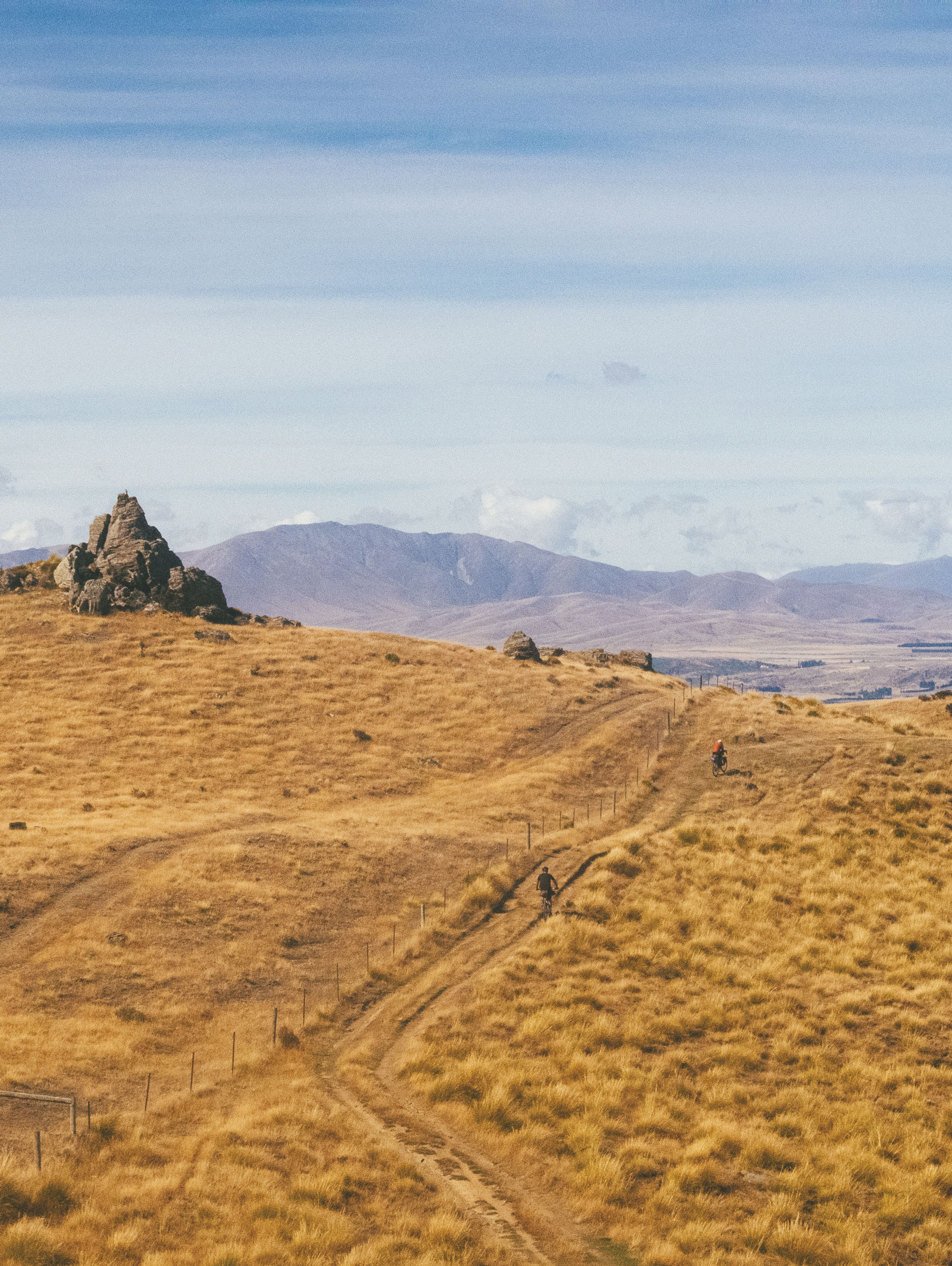
Being on the road for multiple days often means weather is inevitably going to show its hand. And boy did it deal us a good’un for that final day.
Day two by all accounts looked to be relatively chill. Fire down the Alps to Ocean for 80km before turning in and heading over Danseys Pass into the Maniototo Basin. The body had other intentions that morning, though, and the knees creaked and groaned as we headed off.
I had never ridden the Alps to Ocean, but I was well aware of its reputation as a boomer trail for eBikes, but moments in I was pleasantly surprised. We skirted Lake Benmore through willows in the hazy morning light, gazed upon forested islands I never knew existed, and marvelled at a landscape I had never seen before. Maybe this wouldn’t be too bad after all. There’s something to be said about adventuring right from the front door of your home. Too often we savour and reserve these exploits for the exotic and far flung locations we lucidly dream about, but often they occur right under your nose in the most unlikely of locations. Observations by bike are my favourite kind. Life is slower, and you are immersed in your surroundings entirely. This is the reset I was after.
After the previous day’s dispensary drought, we really made the most of the towns scattered down the State Highway. Otematata, Kurow and Duntroon all featured on our hit list, and we made sure to load up before we once again headed into desolation over Danseys Pass which, unbeknownst to us, would be the straw that broke the camel’s back. Danseys Pass is an old gateway to the Maniototo Plains, and is a historic reminder of the efforts from the late-1800’s settlers as they forged their own path through these hills. Some men.
We hit the base of the pass at 2pm with a blazing sun overhead and little water on offer. The Pass begins with a rolling approach and false flats that suck you dry before a final 500m of elevation in the final push to the pass. On paper it doesn’t strike you as particularly difficult but, with a culmination of symptoms from the previous day, we were battling.
Time seems to have stood still in this forgotten corner of the country. Relics of a bygone era are abundant, with old stone cottages littering the roadside, casting a watchful eye on our weary souls. You can’t help but wonder what a wild and daunting country this must have been in the late 1800’s. It’s still daunting now, but nestled amongst the historic diggings was our light at the end of tunnel – the historic Danseys Pass Hotel. The hotel was bustling with locals on their Sunday night as a couple of deranged riders covered in dust and sweat rolled in for a Coke, helmets on. A stark sight.
It wasn’t long before we needed to push on to Naseby. We needed some dinner and in this sleepy corner of the world on a Sunday night, we weren’t all that positive we would find it. All seemed well and good, before the final six kms into Naseby, where we turned into a roaring head wind and, naturally, it was all uphill. Progress was slow, and the engines empty. These solitary long distance rides force you deep into your own mind. It plays tricks on you, and you try to play tricks back. As the wind beats down, you remember where you are, tracing the paths of the goldminers, daydream, and everything comes to an end. The cranks turn a few more times. It’s a simple movement repeated over and over again. A metaphor of the daily grind we left two days prior. Monotony is prevalent, but so is wonder. This country has so much to offer.
The good news was, we made Naseby in time for a fried chicken burger and were handsomely rewarded by the GPS pointing us south. It came with some relief. A 40km tarmac haul straight downwind to the base of the Poolburn Reservoir. We had hoped to get over Poolburn that day, but a slow day in the heat had dealt its blow. Darkness swallowed us and, just like a couple of diesel engines, we became two lone lights chugging down that empty stretch of highway. With our eyes on the hunt for a home for the night, we scanned a sheltered rocky outcrop at the base of the Old Dunstan Road and settled into sleep under a starlit sky. Bliss. We’d added 205 kilometres and 2400m to the tally.
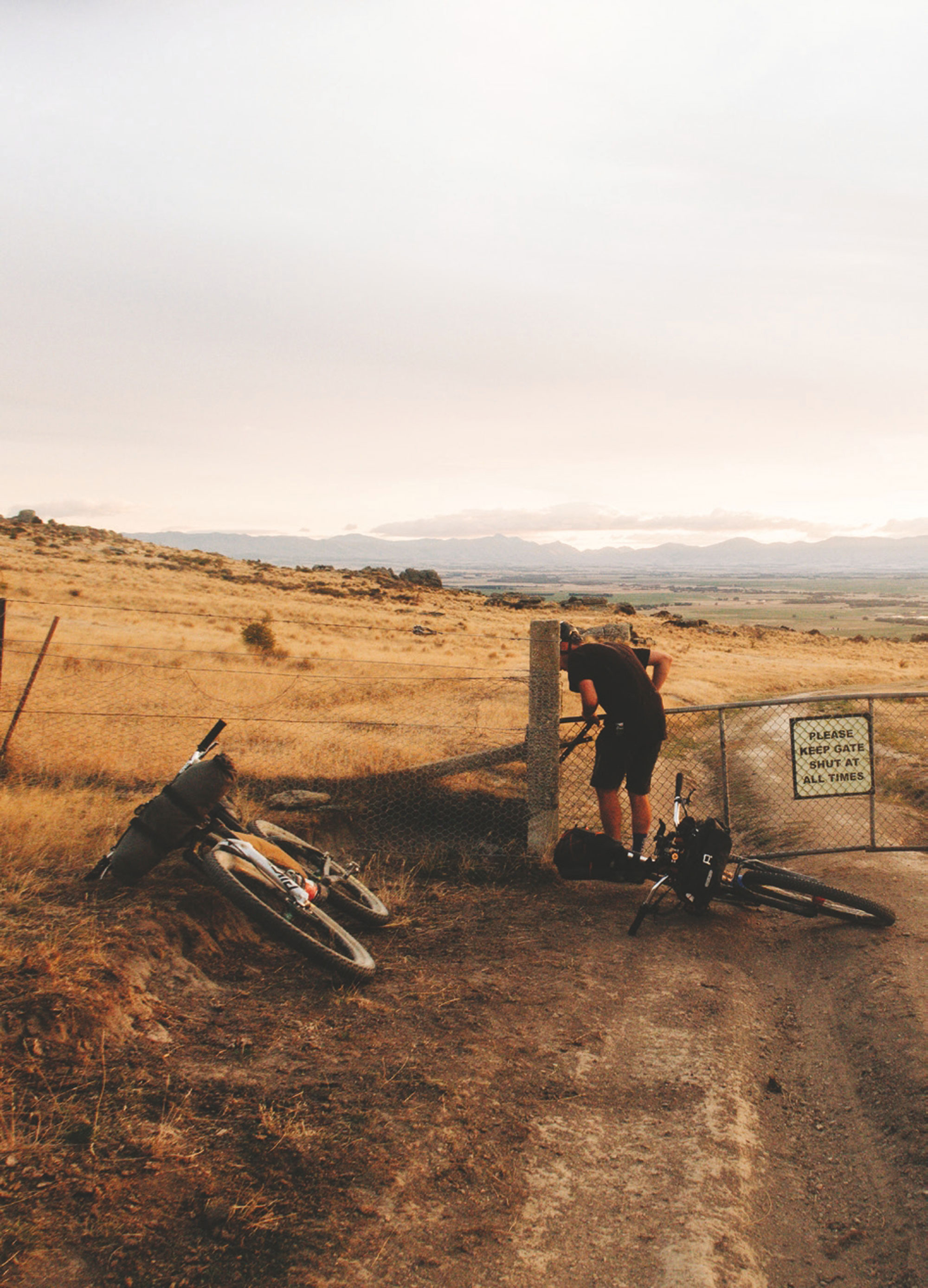
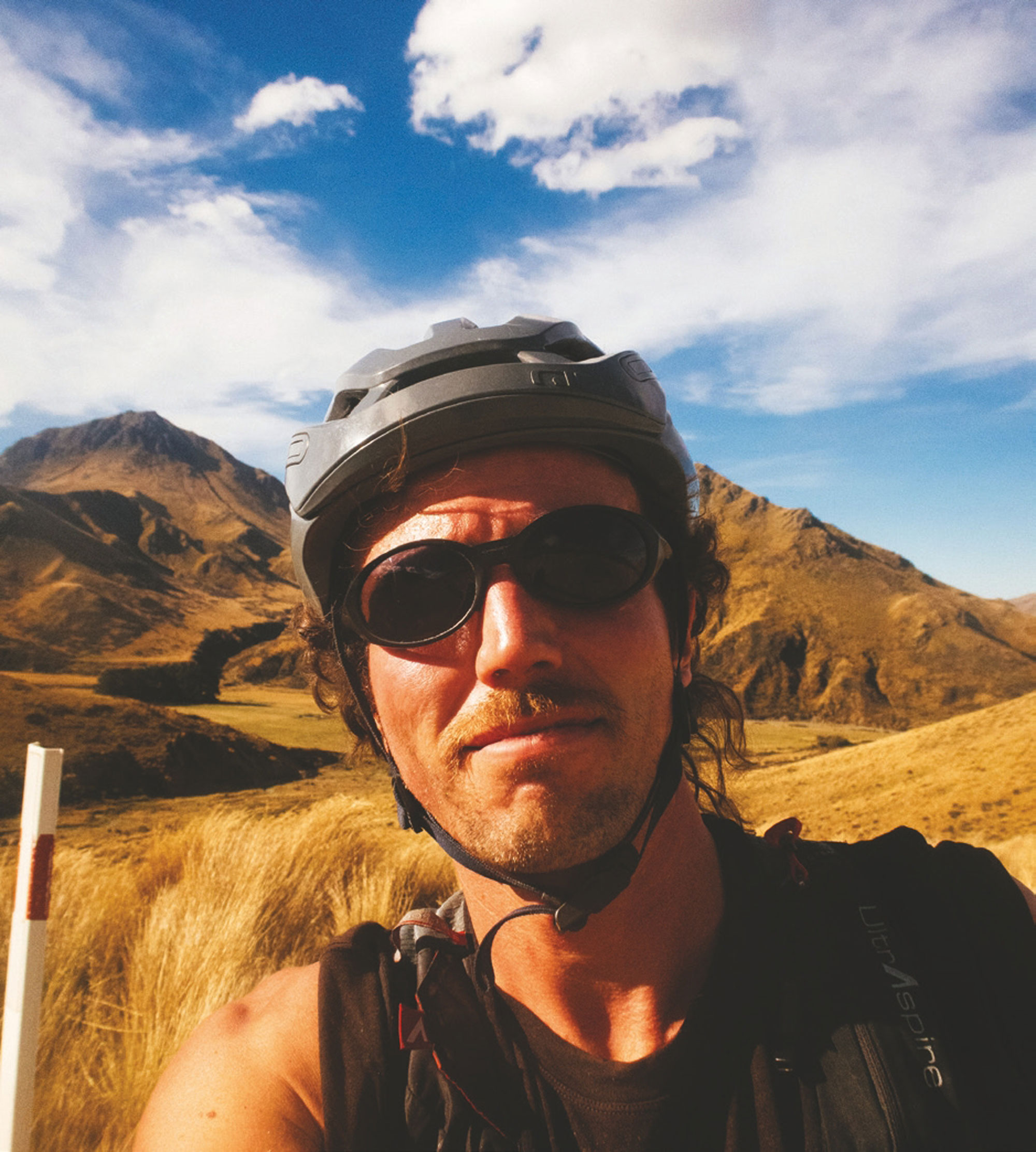
We fired up the lights, grabbed our jackets and descended into the most glorious of tailwinds you could ever imagine.
These are the moments that make this kind of ride. The problem solving, the isolation, the scraps of food at the bottom of the frame bag for breakfast. It’s raw and primitive, and all societal norms are thrown by the wayside. Anything goes out here. A 7am start time was a bit later than we wanted, but Olly was in no mood for getting up that day. A 6:30am call time came and went as I stood over him, fully packed, and he lay there still nestled in his sleeping bag. “I should probably get up, eh?” We still had a long way to go.
The Old Dunstan road is the original route gold miners used from Dunedin to the gold diggings of Central, and on that cold morning, traversing through the bizarre landscape of Poolburn, you had to wonder how on earth they managed it. They were built tough back then. Poolburn is a reservoir built in the 1930’s as an effort to supply the farmers of the dry Ida valley with a consistent source of water. Today it is a barren landscape littered with rock pillars and, remarkably, a multitude of rustic baches. It’s a strange sight to see so many unique dwellings surrounding a picturesque dam in such a remote and unforgiving landscape.
Being on the road for multiple days often means weather is inevitably going to show its hand. And boy did it deal us a good’un for that final day. Home awaited us directly north west, and into the direction of the famed Norwester. Please, not today. We settled into a 50km morning commute to Omakau for a much needed breakfast, before launching into Thompson’s Gorge, and the border of familiarity. This is where things got interesting. The infamous Norwester was by now at full force, and we crawled the 15kms from Omakau to the gorge. Manageable, we thought, but slow.
Once in the gorge, the battle began. Not easy at the best of times, the 1000m of climbing through the gorge proved to be near impossible on this day. The wind roared stronger than ever, the gorge acting as a relief and accelerating it into our faces. A loaded bike really acts as a good sail when it needs to, and we were copping every inch of it. Every few metres a gust would knock you into the ditch to start again. Reset, back on the bike, back in the ditch. It was a cycle of struggle, and we ended up having to push most of the exposed sections, including the downhills as the wind would bring us to a halt as we crawled our way into the belly of the gorge, and into some small moments of shelter. The weather charts showed that the wind wasn’t going to rest, and a cold rain storm was following in its footsteps. Time to hustle, as best we could. Exiting Thompson’s Gorge we had only achieved 85kms in 8.5 hours. Hardly record breaking.
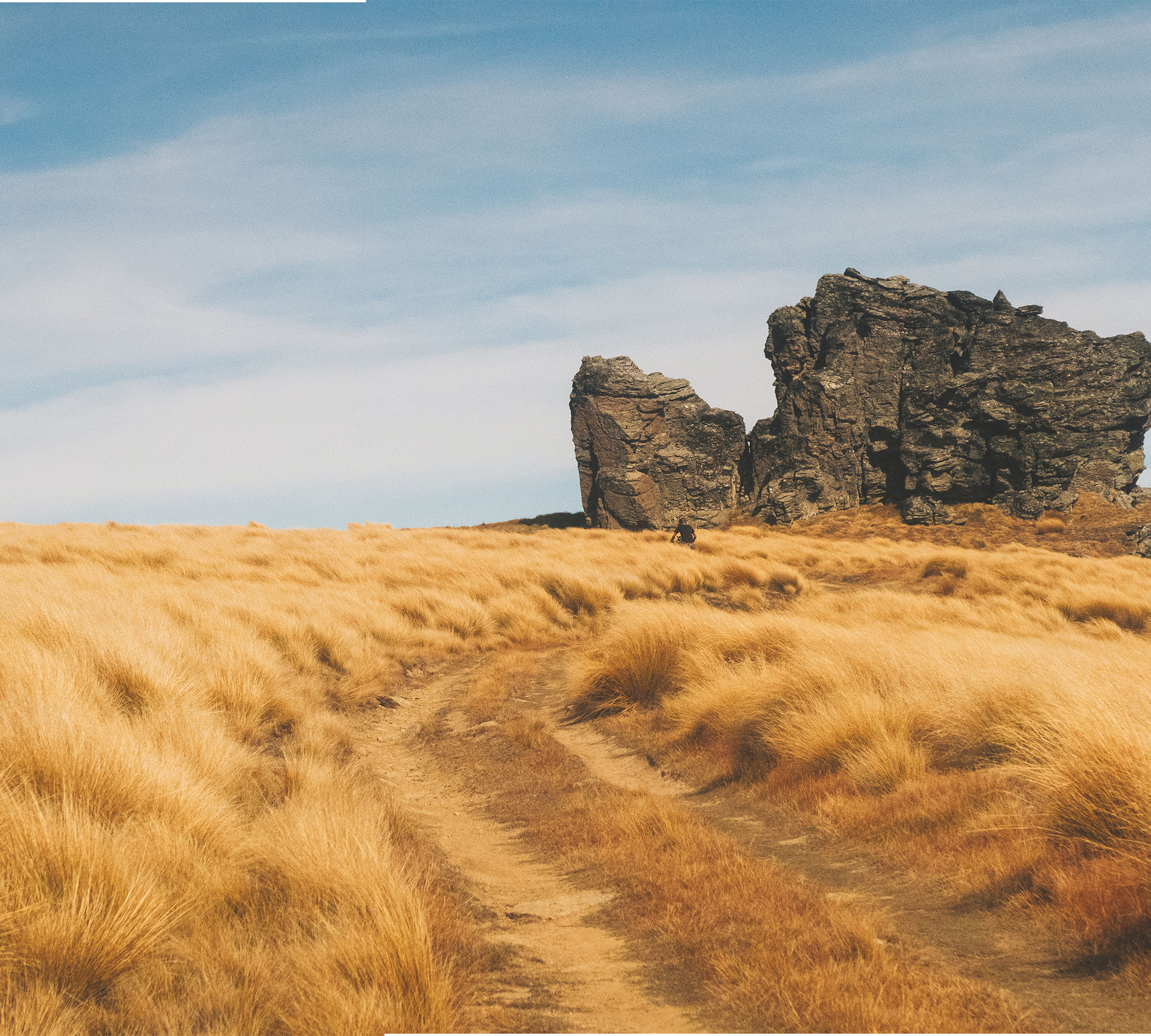
Nothing quite beats the feeling of rolling into your front door, sodden, battered, with a smile plastered across your face knowing full well you’ll be back. That was it, that was a good reset.
The route has us heading from Tarras up over the Grandview Ridge and dropping into Lake Hawea. A brutal section with 1600m of climbing, and we would be exposed to the mercy of the weather at high altitude the entire time. We hit Tarras at 5:30pm with dark clouds looming and the wind baring every square inch of its teeth. We had a decision to make. We had heard rumours of this 10km section taking earlier riders six or seven hours to traverse. With home right there, and work in the morning, we had to make the call to abandon that section for safety concerns. The relentless wind, and our slow previous day, had meant we hit Grandview too late, so home time it was. If we could even get there.
After a brief recoup in Tarras, we braced ourselves and took off into the exposed plains. What proceeded was so mentally draining it became borderline funny. Some 2.5 hours later we had only managed to squeak out another 25km, but we had made it out of the plains and into the familiar winding gravel of home. An hour later, we arrived with the cold driving rain at 8:45pm, back to where it all began just a few days prior, but with a lifetime of memories richer. That final day comprised 141 kilometres and 2135m of climbing in 13 hours.
Despite having to abandon the last section of the route, we had got what we had come for. An old fashioned adventure exploring the remote corners of our country with good mates. Nothing quite beats the feeling of rolling into your front door, sodden, battered, with a smile plastered across your face knowing full well you’ll be back. That was it, that was a good reset. Work tomorrow.


